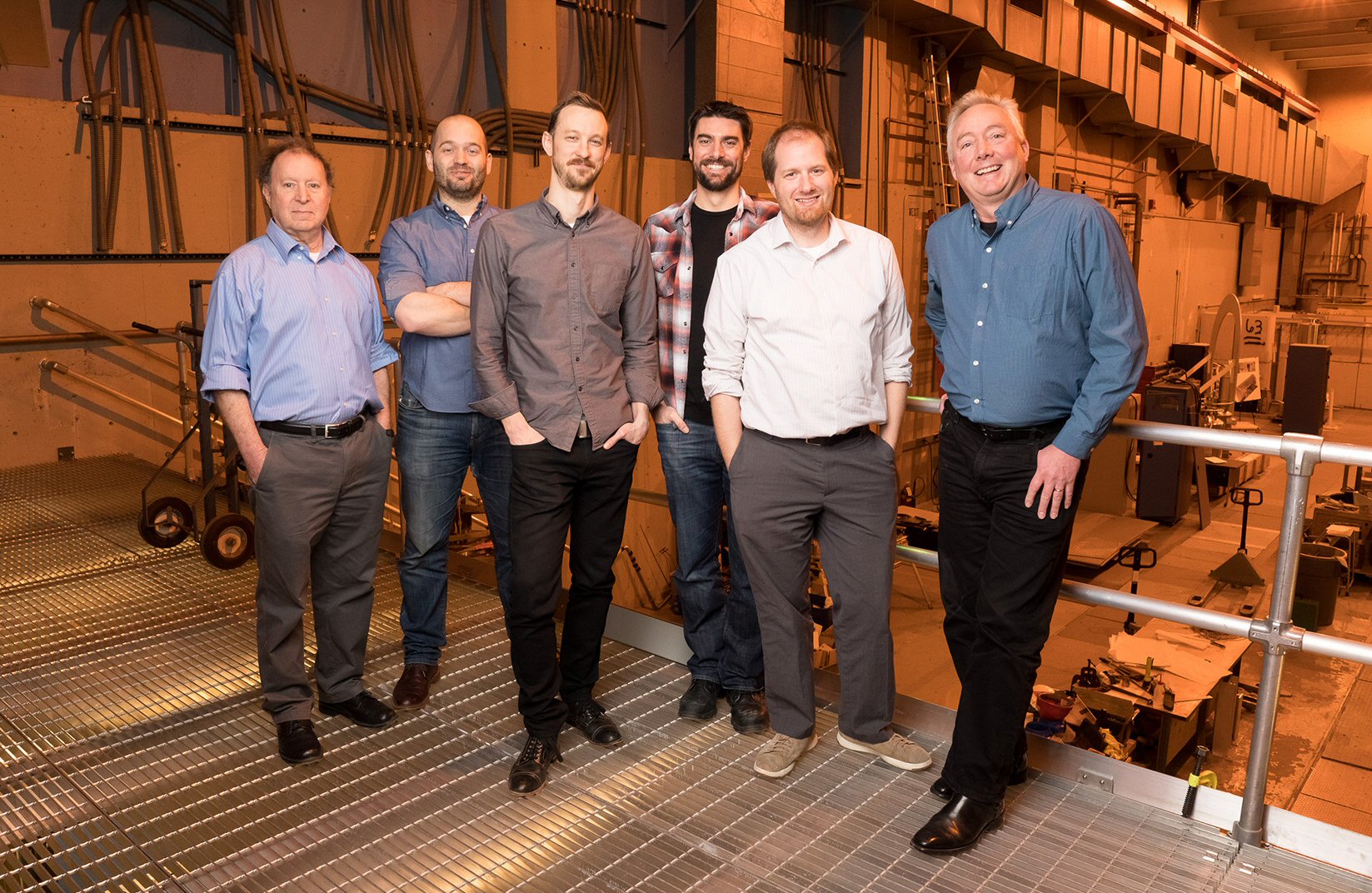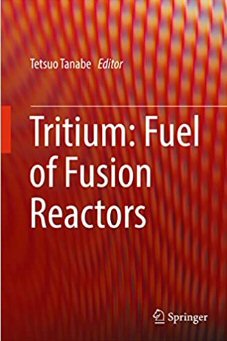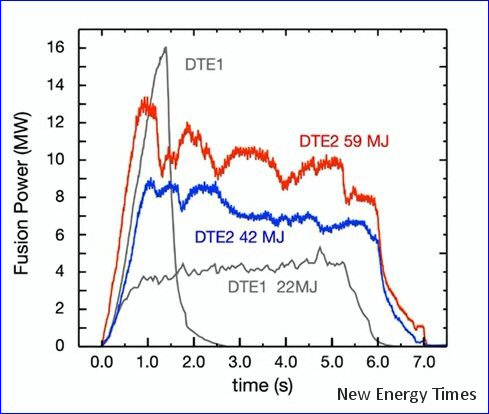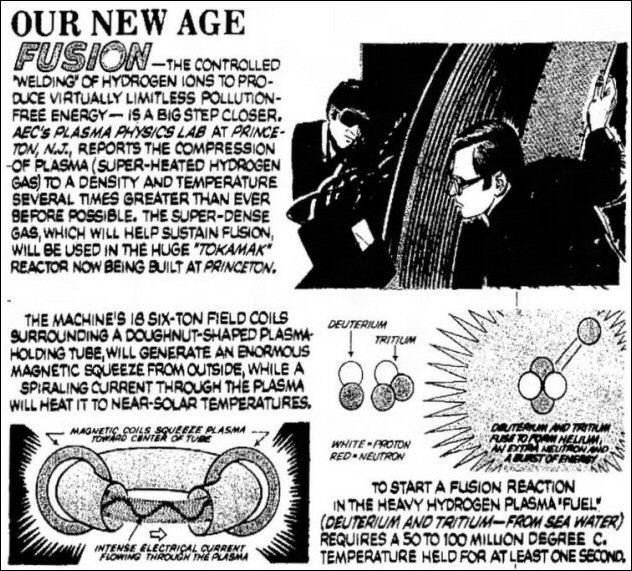By Steven B. Krivit
Aug. 8, 2022

Commonwealth Fusion Systems founders (left-to-right): Martin Greenwald, Dan Brunner, Zach Hartwig, Brandon Sorbom, Robert Mumgaard, and Dennis Whyte.
I do not know any fusion scientist who has devoted years in graduate school and more years in research intending to mislead or defraud anybody. I assume fusion scientists all have the best of intentions.
They long ago recognized the shortsightedness of a civilization built on the tenuous foundation of finite fossil fuels. They understood the environmental consequences of burning those fuels.
They knew that the Utopian dream of controlled nuclear fusion on Earth was a long shot. One of the holy grails of science, fusion was a noble quest, and they wanted to try their best.
Yet, somewhere along the road to fusion, many of the fusion scientists — specifically those in the public spotlight — lost their way. They forgot what it means to be a scientist: show your data, explain your assumptions, define your terms.
Walk Before You Run
A baby cannot be expected to go directly from crawling to running without the intermediate accomplishment of walking. Likewise, experimental fusion reactors cannot be expected to go directly from their current state to the demonstration of reactor net power, not even for a second.
A required intermediate step is the plasma — the superheated fuel in which the fusion reactions take place — achieving net power. Plasma net power, if it ever happens, would occur when the particles in the fusion plasma produce more thermal power than is used to heat the fuel. However, plasma net power does not account for any of the electrical power required to operate a fusion reactor. When scientists compare the output to input, plasma net power accounts for only the heat that is injected into the reaction chamber. Plasma net power does not account for even the electrical power required to heat the fuel. It is certainly a prerequisite for a practical fusion reactor, but it is only the first of many prerequisites.
The SPARC reactor, designed by the Massachusetts Institute of Technology, is designed to achieve only plasma net power. However, the MIT fusion scientists have sold SPARC as if it were designed for reactor net power. The term for this procedure is a bait-and-switch swindle.
Reactor net power occurs when the particles in the fusion plasma produce more power than is used to operate the reactor. Reactor net power accounts for all the electrical power required to operate a fusion reactor, including the electrical power required to heat the fuel. This is the second prerequisite for a practical fusion reactor.
The third prerequisite for a practical fusion reactor is that the value of the electrical energy that the reactor could sell must be at least as much as the cost to build and operate the reactor. All fusion scientists learn about these three prerequisites in school; they are taught by their formal names: scientific breakeven, engineering breakeven, and economic breakeven.
The best fusion power result so far took place in 1997. In that experiment, the reactor came 67% of the way to producing plasma net power (scientific breakeven). In terms of producing reactor net power, that experiment came only 1% of the way (engineering breakeven). Progress toward economic breakeven would be even further away. After economic breakeven, another quantum step would be required for a fusion reactor to become commercially relevant.
News releases abound with claims of new record temperatures and plasma durations achieved. These fusion research organizations would have us believe that commercial viability is close at hand. None of these claims has any bearing on power production; they are part of the fusion hype.
In 2015, Lockheed Martin’s Skunk Works group created a media sensation claiming that it would be delivering a working prototype of a fusion reactor by 2020. I asked them at the time for the best power result that they had achieved in their experiments. They told me that they had no data to share. It’s now seven years later. They have no working prototype of a fusion reactor.
Three week ago, I asked Michl Binderbauer, the chief executive officer of Tri-Alpha Energy for the best power result TAE has achieved. He didn’t respond.
High-energy physicist L. J. Reinders, who is an author of two critical books about fusion, told me about a conversation he had with a friend of his, one of the senior scientists for another private fusion research company, Tokamak Energy Ltd. Reinders asked his friend, “Do you really think you will be putting energy onto the grid with your reactor?” His friend said, with a laugh, “It depends on what you mean by grid.” Fusion funding, scientists have found, requires spinning science.
No investor or member of the public cares about a fusion reactor that produces only plasma net power because that achievement would not be enough to produce one Watt of useful power. This is why fusion scientists have created the illusion that their next fusion machines are expected to produce reactor net power. This is what happened with the International Thermonuclear Experimental Reactor; this is what is happening with the MIT SPARC reactor design.
Out of Time, Out of Money
For 43 years, the MIT Nuclear Science and Engineering Department had relied on taxpayers’ money to pay for MIT’s experimental fusion reactors. Fusion had been perceived as a research activity of national importance but one that was so costly that only the federal government could financially underwrite it.
But by 2013, members of Congress were getting weary of the perennial unfulfilled promises of fusion and were doubting whether fusion was a good use of public funds. The MIT fusion department was running out of time and out of money. Congress warned the MIT scientists that the end was coming.
This was ironic, according to MIT engineering professor Dennis Whyte, who later became the director of the fusion department. In a TEDx lecture, he told the audience that he and his students had just designed a new fusion reactor that could produce 250 million Watts of electricity 24/7. The fuel, Whyte said, was the greatest lure of fusion energy.
“The fuel is so abundant because it is essentially hydrogen. It actually occurs naturally in seawater,” he said, “and it’s effectively unlimited to all people on Earth.”
Already Out of Fuel
A 250 megawatt fusion reactor producing electricity 24/7, running on “essentially hydrogen” from sea water, was an extraordinarily bold claim for an “energy source” that had never produced one usable Watt of power. But Whyte was far from alone in claiming that the fuel for nuclear fusion could come from sea water. Many of his peers in the fusion community regularly promulgated the false claim that the fuel for fusion was “abundant, virtually inexhaustible, and equally accessible to everyone, everywhere.”
A few months ago, we learned that such fuel claims were nonsense. We also learned that fusion scientists knew that tritium did not exist abundantly, virtually inexhaustibly, or equally accessible to anyone, anywhere, despite what the scientists had told us.
Instead, fusion scientists subscribed to a shared belief, imagining that cost-effective methods existed, or would be developed, to extract lithium from sea water. They imagined that a process existed by which natural lithium would be safely enriched in industrial quantities. They imagined that enrichment plants existed based on such a process. The belief system included an imagined process by which fusion reactors could breed tritium from enriched lithium faster than the reactors would consume and lose tritium.
Whyte must have known that tritium did not exist as a natural resource, but he may have reasonably assumed that other scientists in the fusion community had tangible solutions for the other required fuel miracles.
Whyte pleaded with the TEDx audience to educate themselves.
“Our lab is about to close,” he said. “The federal government is threatening to remove all of our funding, and it will, in fact, cut off this extremely promising area of research toward this energy source.”
Fusion has been perpetually promising.
MIT administrators were apparently impressed with Whyte’s enthusiasm, and on Nov. 19, 2014, MIT announced that Whyte had been appointed to head the fusion department. In the announcement, MIT even featured the TEDx talk in which Whyte described the “250 MW electric fusion reactor” that could “run 24/7” on “essentially hydrogen” from sea water.
The Inevitable
As Whyte feared, the inevitable came in 2016, when Congress finally told MIT that it was done. Whyte spoke to Rivka Galchen of The New Yorker about this moment.
“On September 30, 2016, MIT’s old experimental fusion device, which had been running for twenty-five years, was obliged to shut down by midnight. ‘This device graduated more than a hundred and fifty Ph.Ds,’ Dennis Whyte said wistfully.”
No reactor; no graduate students. No graduate students; no graduate school. Facing careers on the verge of irrelevance, MIT fusion professors and recent fusion graduates needed to sell fusion; they needed a financial infusion. And so it began.
A New SPARC
On June 16, 2017, the MIT news office published the first article about the SPARC reactor concept developed by Whyte and his students.
“[SPARC will be] the world’s first demonstration of net energy from a fusion experiment — making SPARC the first fusion device to make more power than it consumes.”
There it was, Whyte’s first and blatant bait-and-switch claim. From context and history, I knew that SPARC was not designed for reactor, or device, net power but only plasma net power.
However, I gave Whyte the benefit of the doubt. The following day, I asked him two simple questions: What is the expected input power, and what is the output power for the reactor? He replied the same day.
“Thanks for your interest, but the requested information is reserved for our private-sector sponsors,” Whyte wrote.
Whyte knew, by my questions, that I knew that SPARC was not designed to be the first fusion device to make more power than it consumes. A few days later, MIT removed the article entirely.
But the MIT fusion department had lost its federal funding. The university itself was unwilling to front the money to build SPARC and to keep its fusion department alive. Whyte needed cash. He also needed a less-noticeable way to create the false appearance that the SPARC reactor was designed to make more power than it would consume.
Capital Infusion
On Oct. 6, 2017, Commonwealth Fusion Systems LLC (CFS) was incorporated. According to the company, there were six co-founders: Dennis Whyte, Martin Greenwald, Zach Hartwig, Dan Brunner, Brandon Sorbom, and Robert Mumgaard.
Greenwald was the deputy director of the MIT fusion department, and Hartwig was a professor in the department. Brunner was a research scientist, Sorbom was a postdoctoral researcher, and Mumgaard was a postdoctoral fellow.
The first available Securities and Exchange Commission Form D filing, dated June 25, 2018, lists the following as officers and/or directors: Mumgaard, Brunner, Sorbom, Massimiliano Pieri, and Katie Rae.
Pieri works for Eni, an Italian energy company. When CFS was formed, Pieri was listed as the Vice President for Cooperation with the Massachusetts Institute of Technology. Eni was CFS’s first investor. Rae is the chief executive officer of The Engine, a venture capital firm founded by MIT.
Half a year later, on March 9, 2018, MIT announced its new collaboration with CFS. Eni and other investors had committed more than $30 million for MIT fusion research. Simultaneously, MIT’s vice president for research, Maria Zuber, who oversees research integrity for MIT, wrote an Op-Ed article in the Boston Globe promoting fusion and CFS. The plan to salvage the MIT fusion department was working.
One paragraph in the MIT press release made promises about the power SPARC would demonstrate:
SPARC is designed to produce about 100 MW of heat … . It will produce … as much power as is used by a small city. That output would be more than twice the power used to heat the plasma, achieving the ultimate technical milestone: positive net energy from fusion.
The SPARC reactor couldn’t possibly power a small city because the planned 100 MW heat output was only the planned plasma power output. That 100 MW value didn’t account for any of the electrical input power. A full accounting of power in and power out wouldn’t leave enough for one light bulb. (I sent my power calculations to Whyte and Greenwald and asked them to identify any errors, but they did not respond.)
The phrase “ultimate technical milestone” was also an attempt to imply that SPARC was designed for reactor net power, as was the phrase “positive net energy from fusion.” The more honest claim would have been “positive net energy from a fusion plasma.”
Understandably, science journalists were unable to decipher the linguistic subterfuge in the press release. At Nature magazine, for example, science journalist Jeff Tollefson wrote that, with the SPARC reactor, the MIT/CFS team “hopes to develop a prototype reactor that can generate more energy than it consumes.”
New Tricks
On July 27, 2019, CFS issued a press release and began using new language. It said that, by 2025, SPARC will demonstrate net energy gain from fusion for the first time in history. The MIT/CFS team also began using the variations “net energy from fusion” and “net-energy fusion machine.” In all such instances, the team was talking only about plasma net power, never reactor net power, knowing full well that the public has always been expecting a fusion reactor with net power.
News outlets like Chemical & Engineering News interpreted the press release as it was intended. Melody M. Bomgardner wrote in C&EN that the SPARC reactor was designed to demonstrate net energy gain by 2025.
Jackpot!
In September 2020, the MIT/CFS team published a group of seven papers in a peer-reviewed journal. The team said the reactor might be able to produce a fusion plasma with not just twice the power injected to heat the fuel but, now, ten times the power. On paper, the reactor design had made a 500% improvement in two years.
Again, the press release worked as intended. Henry Fountain, writing for The New York Times, said that the SPARC reactor could “produce as much as 10 times the energy it consumes.”
And by the Fall of 2021, with such consistently and strategically placed false claims, CFS had attracted 72 investors and sold $1.8 billion of equity in the company. Mumgaard spoke with Nature magazine about SPARC:
MIT and CFS together are preparing to build what Mumgaard calls “the first fusion machine that makes net energy” — producing more energy than goes into it. Named SPARC, it is being constructed in Devens, Massachusetts. Mumgaard says it will be running by the end of 2025 and will be “commercially relevant” because it will generate around 100 MW of power.
Not only had MIT/CFS had deceived the New York Times, they also fooled Nature, ostensibly the world’s most authoritative general-science magazine. The con was in full swing, with many of the investors, like Safar Partners, issuing their own press releases saying that SPARC will be “the world’s first commercially relevant net energy fusion machine.”
Among the CFS investors was Footprint Coalition, which was thrilled that the fuel source was endless, as the company wrote in a press release:
All of this money is pouring in for one reason: fusion has the potential to create hundreds of megawatts of energy from a resource as common as a glass of seawater — and without any long-term radioactive waste.
According to Wilson Sonsini Goodrich & Rosati, a prestigious law firm that specializes in business, securities, and intellectual property law, the 2021 CFS “Series B round was led by Tiger Global Management, with participation by new investors, including (in alphabetical order) Bill Gates; Coatue; DFJ Growth; Emerson Collective; Footprint Coalition; Google; JIMCO Technology Fund, part of JIMCO, the Jameel Family’s global investment arm; John Doerr; JS Capital; Marc Benioff’s TIME Ventures; Senator Investment Group; a major university endowment; and a pension plan. Also participating were existing investors, including Breakthrough Energy Ventures; The Engine; Eni; Equinor Ventures; Fine Structure Ventures; Future Ventures; Hostplus; Khosla Ventures; Lowercarbon; Moore Strategic Ventures; Safar Partners; Schooner Capital; Soros Fund Management LLC; Starlight Ventures; Temasek; and others.”
Although we know from the SEC filing that there are at least 72 investors, we don’t know how many individuals are represented by those 72 investors. For example, we don’t know how many elderly retirees have had a portion of their pension plan invested in CFS on their behalf.






